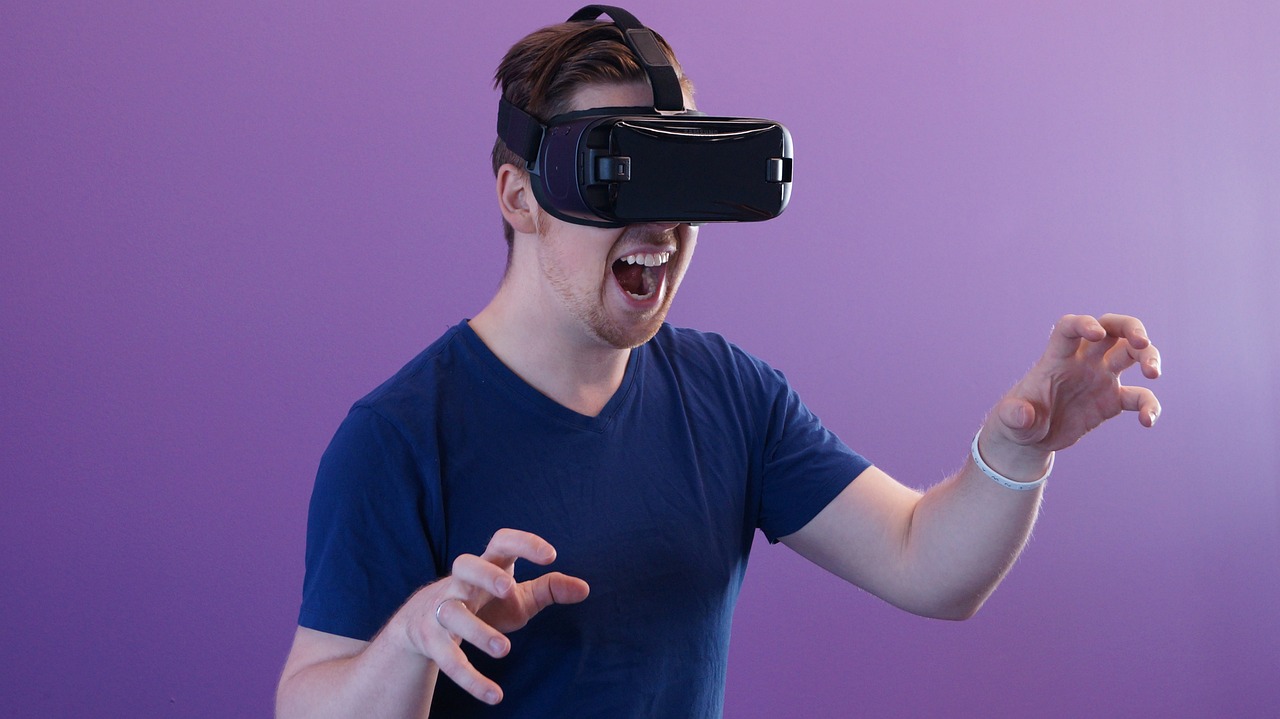Assessing the Applications of VR in Counterinsurgency Training
In recent years, Virtual Reality (VR) technology has emerged as a groundbreaking tool in various fields, and its applications in counterinsurgency training are no exception. Imagine stepping into a fully immersive world where you can experience the chaos of a battlefield without ever leaving your training facility. That’s the magic of VR! It’s not just about playing video games anymore; it’s about preparing our military personnel for the complexities of real-world conflicts. This article delves into how VR is transforming the way soldiers train, enhancing their tactical skills, situational awareness, and decision-making processes in environments that are anything but straightforward.
Counterinsurgency training is all about equipping military personnel with the tools they need to tackle insurgent threats effectively. It’s not just about combat; it’s a multifaceted approach that combines military force with political and social engagement. Think of it as a delicate dance where understanding the local culture and building relationships can be just as important as firepower. The aim is to stabilize regions by addressing the root causes of unrest, which requires soldiers to be adaptable, knowledgeable, and ready for anything. In this context, VR training becomes a vital asset, offering a safe space to practice and perfect these complex skills.
So, how does VR fit into this intricate puzzle? By providing immersive environments that simulate real-world scenarios, VR allows soldiers to practice and refine their skills without the risks associated with live training exercises. Imagine being able to navigate through a virtual town, facing various challenges that could arise on a real mission. This kind of training enhances not only readiness but also confidence. The beauty of VR lies in its ability to recreate the unpredictable nature of counterinsurgency operations, allowing soldiers to experience situations that are often too dangerous or logistically challenging to replicate in the real world.
One of the standout features of VR simulations is their ability to provide realistic training experiences. Here are some key benefits:
- Realism: VR can create lifelike scenarios that challenge soldiers to think and act quickly.
- Repetition: Soldiers can repeat scenarios as many times as needed, allowing them to learn from mistakes without real-world consequences.
- Immediate Feedback: Trainees receive instant evaluations of their performance, helping them improve on the fly.
These advantages collectively contribute to enhanced performance and greater confidence among trainees, preparing them for the unpredictable nature of real missions.
Let’s talk about the financial aspect. Implementing VR technology can significantly reduce training costs. Traditional training often requires extensive physical resources, travel, and live exercises, all of which can add up quickly. With VR, the need for these resources diminishes. You can conduct high-quality training experiences without the hefty price tag. It’s like having the best of both worlds—effective training that doesn’t break the bank!
Another remarkable feature of VR is its ability to create customized training scenarios. Trainers can design specific situations that address the unique operational challenges soldiers might face. This means that whether a unit is preparing for urban warfare, dealing with improvised explosive devices, or navigating complex social dynamics, they can practice tailored scenarios that reflect their real-world missions. It’s like having a personal trainer who knows exactly what you need to work on!
One of the most critical aspects of counterinsurgency operations is the ability to make quick, informed decisions under pressure. Training in virtual environments fosters critical thinking and helps soldiers develop the cognitive tools necessary to handle unpredictable situations. Imagine being in a high-stakes scenario where every second counts. VR training allows soldiers to practice these high-pressure decision-making skills repeatedly, ensuring they are prepared for anything that might come their way in the field.
Despite the myriad benefits, integrating VR into military training is not without its challenges. Technological limitations can hinder the effectiveness of VR training, as current technology may not fully replicate the complexities of real-world environments. Additionally, there’s the need for extensive training for instructors to effectively utilize this technology. And let’s not forget the potential resistance from traditional training methodologies. Some military personnel may prefer tried-and-true methods, making it crucial to address these concerns to maximize the benefits of VR training.
While VR technology is advancing rapidly, it still has its limitations. The challenge lies in ensuring that these simulations accurately reflect the chaotic and unpredictable nature of real-world environments. Continuous advancements are necessary to bridge this gap and enhance the effectiveness of VR training.
Change can be tough, especially in the military, where tradition and established practices hold significant weight. Some personnel may be hesitant to embrace new technologies like VR, preferring the familiarity of conventional training methods. Overcoming this resistance is essential for successful implementation. It’s about demonstrating the value of VR and how it can complement traditional training rather than replace it.
Q: What is Virtual Reality training?
A: Virtual Reality training uses immersive technology to simulate real-world scenarios for military personnel, allowing them to practice skills in a safe environment.
Q: How does VR improve decision-making skills?
A: VR training creates high-pressure scenarios where soldiers must make quick decisions, helping them develop critical thinking and problem-solving skills.
Q: Are there any drawbacks to using VR in military training?
A: Yes, challenges include technological limitations, the need for instructor training, and resistance from personnel accustomed to traditional methods.
Q: Is VR training cost-effective?
A: Absolutely! VR training can significantly reduce costs associated with physical resources and travel while providing high-quality training experiences.

Understanding Counterinsurgency Training
Counterinsurgency training is a specialized field within military education that prepares personnel to effectively combat insurgent threats. Unlike conventional warfare, which often focuses on direct confrontations between opposing forces, counterinsurgency requires a more nuanced approach. It emphasizes strategies that blend military force with political and social engagement to stabilize regions plagued by unrest. This dual focus not only enhances the effectiveness of military operations but also fosters a deeper understanding of the complex dynamics at play in conflict zones.
At its core, counterinsurgency training aims to equip military personnel with the skills necessary to navigate the intricate landscape of insurgency. This includes understanding the motivations of insurgent groups, recognizing the importance of winning the hearts and minds of local populations, and developing strategies that integrate both combat and civil action. The goal is to create a stable environment where peace can flourish, allowing local governments to regain control and legitimacy.
To achieve these objectives, training programs often incorporate a mix of classroom instruction, field exercises, and simulations. Trainees engage in realistic scenarios that challenge their tactical skills, decision-making abilities, and interpersonal communication. For example, they might participate in role-playing exercises where they must negotiate with local leaders or respond to civilian concerns while also addressing security threats. This multifaceted approach prepares soldiers for the unpredictable nature of counterinsurgency operations.
Moreover, effective counterinsurgency training recognizes the importance of cultural awareness and adaptability. Soldiers must understand the unique social, economic, and political contexts of the regions in which they operate. This understanding is crucial for building trust with local communities and for implementing strategies that are not only effective but also respectful of local customs and traditions. As the saying goes, "You can win every battle but still lose the war" if you fail to engage with the people.
In summary, counterinsurgency training is a complex and dynamic process that requires a blend of military tactics, cultural sensitivity, and strategic thinking. By preparing military personnel to engage with both the physical and social landscapes of conflict, this training plays a vital role in achieving long-term stability in regions affected by insurgency.

The Role of Virtual Reality in Training
Virtual reality (VR) technology is revolutionizing the way military personnel are trained, especially in the realm of counterinsurgency. Imagine stepping into a world where you can face real-life scenarios without leaving the safety of a training facility. This is precisely what VR offers—an immersive experience that allows soldiers to engage with lifelike environments and situations. By creating these virtual worlds, VR ensures that trainees can practice their skills in a controlled setting, honing their tactical abilities and situational awareness before they ever set foot on the battlefield.
In traditional training methods, soldiers often rely on static models or limited simulations that can’t fully replicate the chaos and unpredictability of actual combat. With VR, the stakes are raised. Trainees can interact with dynamic elements, such as moving targets, changing weather conditions, and unpredictable enemy behaviors, all of which are crucial for developing a soldier's instinctive responses. This high level of realism not only enhances their readiness but also builds confidence in their capabilities.
Moreover, VR training is not just about the visuals; it’s a multi-sensory experience. Trainees can hear sounds, feel vibrations, and even experience simulated physical impacts, making the training as realistic as possible. For example, a soldier might find themselves in a virtual cityscape, navigating through narrow alleys while making split-second decisions on how to engage with insurgents. This kind of training helps them to think critically and act decisively—a necessity in the unpredictable world of counterinsurgency.
Additionally, one of the standout features of VR is the ability to repeat scenarios until mastery is achieved. Unlike traditional training exercises, where time and resources can limit repetition, VR allows soldiers to revisit the same scenario multiple times, refining their techniques and strategies with each iteration. This kind of repetitive practice is essential for embedding skills into muscle memory, ensuring that when the time comes for real-world application, soldiers can react automatically and effectively.
Furthermore, VR training provides immediate feedback through performance analytics. After each simulation, trainees can review their actions, assess their decision-making processes, and receive constructive critiques from instructors. This quick turnaround of feedback is invaluable, as it allows soldiers to learn from their mistakes in real-time and adjust their tactics accordingly. The combination of immersive experiences, repeated practice, and instant feedback creates a powerful training environment that significantly enhances the overall effectiveness of military personnel.
In summary, the role of virtual reality in training goes beyond mere simulation; it transforms the way soldiers prepare for the complexities of counterinsurgency operations. By immersing them in realistic scenarios, providing opportunities for repetition, and offering immediate feedback, VR equips military personnel with the skills and confidence they need to succeed in challenging environments. As technology continues to evolve, the potential for VR in military training will only expand, paving the way for a new era of preparedness and operational success.

Benefits of VR Simulations
When we talk about the , it's like opening a treasure chest filled with tools that can revolutionize military training. Imagine stepping into a world where you can experience the chaos of a battlefield without the actual danger. That's what VR does—it creates immersive environments that mimic real-world scenarios, allowing soldiers to train effectively in a safe space. This immersive experience significantly enhances learning, as it engages multiple senses and makes the training feel more authentic.
One of the standout advantages of VR simulations is the ability to practice and repeat scenarios as many times as needed. Think of it like a video game where you can hit the reset button whenever you make a mistake. This repetition helps solidify skills and builds muscle memory, which is essential in high-pressure situations. Soldiers can face various challenges—from navigating complex terrains to engaging with insurgents—without the logistical nightmares of setting up real-world training exercises.
Moreover, VR simulations provide immediate feedback, which is crucial for learning. After each training session, soldiers can debrief and analyze their performance. This feedback loop is akin to reviewing game footage after a match; it allows soldiers to identify their strengths and weaknesses and refine their tactics accordingly. The combination of realistic training experiences, repetition, and feedback fosters an environment where trainees can build confidence and competence.
Additionally, VR training can be tailored to meet specific operational needs. Trainers can design scenarios that reflect the unique challenges soldiers may face in different regions or missions. For instance, if a unit is preparing for a deployment in a densely populated urban area, VR can simulate that environment, allowing soldiers to practice tactics that are directly relevant to their upcoming challenges. This customization ensures that training is not just generic but highly relevant and applicable.
In summary, the benefits of VR simulations in counterinsurgency training are vast and varied. They offer an innovative approach to military readiness by providing realistic training experiences, the ability to repeat scenarios, and instant feedback. As we embrace this technology, we pave the way for a new era in military training where soldiers are not just prepared but are also empowered to make quick, informed decisions in the heat of the moment.
- What are VR simulations? VR simulations are immersive training environments that replicate real-world scenarios, allowing military personnel to practice skills safely.
- How do VR simulations enhance training? They provide realistic experiences, allow for repetitive practice, and offer immediate feedback to improve performance.
- Can VR training be customized? Yes, trainers can create tailored scenarios to address specific operational challenges faced by soldiers.
- What are the challenges of implementing VR training? Challenges include technological limitations, the need for instructor training, and potential resistance from traditional training methods.

Cost-Effectiveness of VR Training
The implementation of Virtual Reality (VR) technology in military training is not just a futuristic concept; it is a practical solution that addresses several financial challenges faced by military organizations. Traditional training methods often require substantial investments in physical resources, such as training grounds, equipment, and personnel. In contrast, VR training significantly reduces these costs, making it an attractive option for military forces looking to enhance their training without breaking the bank.
One of the most significant cost-saving aspects of VR training is the reduction in travel expenses. With VR, soldiers can engage in realistic training scenarios from their home bases, eliminating the need for extensive travel to remote training locations. This not only saves money but also maximizes time efficiency, allowing military personnel to focus more on their training rather than logistics.
Moreover, VR training minimizes the need for physical resources. For example, consider the costs associated with live-fire exercises, where ammunition, targets, and safety measures can accumulate substantial expenses. In contrast, VR simulations can replicate these scenarios without the associated costs of actual ammunition or physical targets. The environmental impact is also reduced, as VR eliminates the need for extensive land use and the associated wear and tear on natural training grounds.
To further illustrate the cost-effectiveness of VR training, let's take a look at a comparative analysis:
| Training Method | Cost Factors | Estimated Costs |
|---|---|---|
| Traditional Training |
|
$50,000 - $100,000 |
| VR Training |
|
$10,000 - $30,000 |
As seen in the table, the cost savings associated with VR training can be substantial. The initial investment in VR technology may seem high, but when compared to the ongoing costs of traditional training methods, it quickly becomes evident that VR is a financially savvy choice. Furthermore, the longevity of VR systems means that once the initial costs are covered, the ongoing expenses remain significantly lower.
In conclusion, the cost-effectiveness of VR training is a game-changer for military organizations. By embracing this technology, they can not only enhance the quality of training but also achieve significant savings that can be redirected to other critical areas of defense. This shift not only prepares soldiers more effectively but also ensures that resources are utilized in the most efficient manner possible.
- What is VR training?
VR training uses immersive technology to simulate real-world scenarios, allowing military personnel to practice skills in a safe environment. - How does VR training save costs?
It reduces expenses related to travel, ammunition, and physical resources needed for traditional training methods. - Are there any downsides to VR training?
Yes, challenges include technological limitations and potential resistance from personnel accustomed to traditional methods. - Can VR training fully replace traditional methods?
While VR is highly effective, it is best used as a supplement to traditional training to cover all aspects of military preparedness.

Customization of Training Scenarios
One of the most exciting aspects of virtual reality (VR)customized training scenarios that can be tailored to meet the specific needs of military personnel. Unlike traditional training methods, where exercises may be standardized and often lack relevance to the actual challenges soldiers face, VR allows for a level of personalization that can significantly enhance the learning experience. Imagine being able to step into a virtual world where you can encounter a variety of insurgent tactics, cultural nuances, and environmental challenges that you might face in a real mission.
This customization is not just about changing the scenery; it involves creating scenarios that are deeply rooted in real-world complexities. For instance, trainers can design situations that simulate urban warfare, rural insurgency, or even humanitarian crises, all of which require different approaches and strategies. By adjusting factors such as the number of insurgents, the terrain, and the presence of civilians, trainers can create scenarios that challenge soldiers to think critically and adapt their tactics on the fly. This kind of immersive experience prepares them for the unpredictability of actual deployments.
Additionally, VR technology enables the incorporation of various cultural contexts into training scenarios. Understanding the local populace's behavior, customs, and potential biases can be crucial in counterinsurgency operations. For example, a VR scenario might involve interacting with local leaders or civilians, where soldiers must navigate complex social dynamics while maintaining their mission objectives. This not only enhances tactical skills but also fosters a deeper understanding of the human element in military operations.
Moreover, the adaptability of VR training allows for iterative learning. After completing a scenario, soldiers can receive immediate feedback, allowing them to reflect on their decisions and performance. They can then re-enter the same scenario with a different approach or strategy, further honing their skills. This cycle of practice, feedback, and adjustment is fundamental in developing critical thinking and problem-solving abilities, which are vital in high-pressure environments.
In conclusion, the customization of training scenarios in VR not only makes the training more relevant and engaging but also significantly enhances the overall effectiveness of counterinsurgency training. By immersing soldiers in tailored environments that replicate the complexities of real-world missions, VR technology is paving the way for a new era of military preparedness.
- What are the main benefits of using VR in military training?
VR offers immersive experiences, realistic simulations, and the ability to repeat scenarios for enhanced learning. - Can VR training replace traditional training methods?
While VR training is highly effective, it is best used as a complement to traditional methods, not a complete replacement. - How does VR technology enhance decision-making skills?
VR training fosters critical thinking and quick decision-making by placing soldiers in high-pressure scenarios where they must react swiftly. - What challenges are associated with implementing VR training?
Challenges include technological limitations, the need for extensive instructor training, and resistance to adopting new methods.

Enhancing Decision-Making Skills
In the realm of counterinsurgency training, the ability to make quick and informed decisions can mean the difference between success and failure. Virtual reality (VR) plays a pivotal role in enhancing these decision-making skills by immersing soldiers in realistic, high-pressure scenarios that mimic the chaotic nature of real combat situations. Imagine being in a virtual environment where every choice you make has immediate consequences, forcing you to think critically and act swiftly. This kind of training is invaluable as it prepares military personnel to handle unpredictable situations that they may face on the battlefield.
One of the standout features of VR training is its capacity to create a sense of urgency. When soldiers are placed in simulations that require them to make rapid decisions, they learn to assess situations quickly and weigh their options effectively. For instance, they might encounter a scenario where they have to choose between engaging an enemy combatant or securing a civilian area. This kind of dilemma not only tests their tactical skills but also their moral and ethical decision-making capabilities.
Moreover, VR training allows for immediate feedback. After completing a simulation, soldiers can review their decisions and outcomes in real-time. This reflective practice is crucial; it helps them understand what worked, what didn’t, and why. By analyzing their choices, they can develop a deeper understanding of the implications of their actions, thereby enhancing their cognitive skills for future missions.
To illustrate the effectiveness of VR in enhancing decision-making skills, consider the following table that outlines key benefits:
| Benefit | Description |
|---|---|
| Realistic Scenarios | Simulations that closely resemble real-life situations help soldiers practice critical thinking. |
| Immediate Feedback | Allows for real-time assessment of decisions made during training exercises. |
| Repetition | Soldiers can repeat scenarios to refine their decision-making processes without real-world consequences. |
| Stress Management | Training under pressure helps soldiers learn to manage stress and maintain composure when it matters most. |
Ultimately, the integration of VR technology into counterinsurgency training is revolutionizing how military personnel develop their decision-making skills. By simulating challenging environments and providing opportunities for critical reflection, VR training not only enhances tactical proficiency but also fosters resilience and adaptability—qualities that are essential for success in modern military operations.
- What is virtual reality training? Virtual reality training uses immersive technology to simulate real-world environments for educational and training purposes.
- How does VR improve decision-making skills? VR places soldiers in high-pressure scenarios that require quick thinking, allowing them to practice and refine their decision-making abilities.
- Are there any limitations to VR training? Yes, current VR technology may not fully replicate real-world complexities, and there can be resistance to adopting new methods.
- What are the cost benefits of using VR in military training? VR can significantly reduce costs related to physical resources, travel, and live exercises while still providing high-quality training experiences.

Challenges in Implementing VR Training
While the integration of virtual reality (VR) into counterinsurgency training presents exciting opportunities, it also faces a set of significant challenges that must be acknowledged. One of the primary obstacles is the technological limitations inherent in current VR systems. Although VR technology has advanced remarkably, it still struggles to fully replicate the complexities of real-world environments. For instance, the nuances of human interactions, the unpredictability of insurgent behavior, and the impact of environmental factors can be difficult to simulate accurately. This gap can limit the effectiveness of training, as soldiers may not experience the full spectrum of challenges they would face in actual operations.
Moreover, the successful implementation of VR training requires extensive training for instructors. Many military personnel may not be familiar with how to operate VR systems or integrate them into their existing training programs. This lack of familiarity can lead to a steep learning curve, which may deter some from embracing this innovative approach. It's essential that military organizations invest time and resources into training instructors to ensure they can effectively teach and guide soldiers through VR simulations.
Another challenge is the resistance to change from traditional training methodologies. Some military personnel may be hesitant to adopt new technologies like VR, preferring the tried-and-true methods they are accustomed to. This resistance can stem from a variety of factors, including a fear of the unknown, skepticism about the effectiveness of VR, or simply a comfort with established routines. To overcome this hurdle, it's crucial to demonstrate the tangible benefits of VR training through pilot programs and success stories, showcasing how it can enhance readiness and performance.
In addition, the cost of implementation can be a significant concern for military budgets. While VR training can ultimately save money by reducing the need for physical resources and travel, the initial investment in VR equipment and software can be substantial. Military organizations must weigh these costs against the potential long-term savings and improvements in training outcomes.
Ultimately, addressing these challenges requires a multifaceted approach that includes ongoing technological advancements, comprehensive training programs for instructors, and a cultural shift within military organizations that embraces innovation. By tackling these issues head-on, the military can harness the full potential of VR training to prepare personnel for the complexities of counterinsurgency missions.
- What are the main benefits of using VR in military training?
VR offers immersive training environments, realistic simulations, and the ability to repeat scenarios, which enhances soldiers' tactical skills and decision-making abilities.
- How does VR training compare to traditional training methods?
While traditional methods provide valuable experiences, VR training allows for more controlled, repeatable, and customizable scenarios that can better prepare soldiers for real-world challenges.
- What are the costs associated with implementing VR training?
Initial costs can be high due to the purchase of equipment and software, but long-term savings can be realized through reduced resource needs and improved training outcomes.
- How can resistance to VR training be overcome?
Demonstrating the effectiveness of VR through pilot programs, success stories, and comprehensive training for instructors can help alleviate concerns and encourage adoption.

Technological Limitations
While virtual reality (VR) technology has made significant strides in enhancing counterinsurgency training, it is not without its challenges. One of the major hurdles is the that currently exist. Despite the immersive experiences that VR can offer, the technology sometimes struggles to accurately replicate the complex dynamics of real-world environments. For instance, the unpredictable nature of insurgent tactics, the intricacies of local cultures, and the fluidity of combat situations can be difficult to model effectively in a VR setting.
This limitation can lead to a training experience that, while engaging, may not fully prepare soldiers for the unpredictability they will face in the field. Imagine preparing for a chess match by only playing against a computer that follows a fixed strategy; while you may learn certain moves, you won't be ready for the spontaneity of a human opponent. Similarly, VR training might not expose military personnel to the full spectrum of challenges they will encounter in actual operations.
Moreover, the hardware and software required for high-quality VR experiences can be both expensive and complex. Many military organizations may find it challenging to invest in the latest VR technology, especially when budgets are tight. The need for ongoing updates and maintenance of VR systems adds another layer of complexity. To illustrate this, consider a
| Training Method | Initial Costs | Ongoing Costs | Resource Requirements |
|---|---|---|---|
| Traditional Training | Moderate | High (fuel, equipment maintenance) | Physical space, personnel |
| VR Training | High | Moderate (software updates) | VR equipment, technical support |
In addition to financial constraints, there is also the challenge of ensuring that the personnel operating these VR systems are adequately trained. Instructors must not only be proficient in using the technology but also understand how to effectively integrate it into their teaching methods. This dual requirement can create a bottleneck, as military trainers may need extensive time and resources to adapt to this new paradigm.
Finally, there's the potential for resistance to change among military personnel. Some may view VR training as a gimmick or question its effectiveness compared to more traditional methods. Overcoming this skepticism is vital for the successful integration of VR into counterinsurgency training programs. It’s essential to demonstrate through evidence and real-world results that VR can enhance readiness rather than detract from it.

Resistance to Change
When it comes to integrating virtual reality (VR) into military training, one of the most significant hurdles is the among personnel. Change can be daunting, especially in an environment as structured and tradition-bound as the military. Many soldiers and trainers are accustomed to conventional methods, having honed their skills through years of hands-on experience. The introduction of VR technology can feel like a leap into the unknown, sparking skepticism and reluctance. But why is this resistance so prevalent?
First off, there’s a natural human tendency to cling to what is familiar. For many military personnel, traditional training methods—whether it’s live exercises or classroom instruction—are tried and tested. They have seen these methods work, and there’s a comfort in that reliability. In contrast, VR is a relatively new tool that requires a shift in mindset. It’s like asking a seasoned chef who has perfected their craft over decades to suddenly start using a new cooking technique. The fear of the unknown can be paralyzing.
Moreover, there’s the issue of perceived effectiveness. Some personnel may question whether VR can truly replicate the complexities and unpredictability of real combat situations. They might argue that nothing can replace the adrenaline rush and real-time decision-making that comes with actual field exercises. This skepticism can lead to a reluctance to fully engage with VR training, resulting in a lack of trust in the technology.
Additionally, there’s the challenge of technical proficiency. Not everyone is comfortable with new technology, and some may feel overwhelmed by the prospect of learning how to use VR systems. This can create a divide between those who embrace technological advancements and those who prefer sticking to traditional methods. Training instructors also face the challenge of adapting their teaching styles to incorporate VR, which may require extensive retraining and adjustment.
To overcome this resistance, it’s crucial to foster an environment that encourages open-mindedness and innovation. Here are a few strategies that can help:
- Education and Training: Providing comprehensive training on how to use VR technology can alleviate fears and build confidence among personnel.
- Showcasing Success Stories: Highlighting examples where VR has significantly improved training outcomes can help shift perceptions.
- Involvement in Development: Engaging military personnel in the development and customization of VR scenarios can make them feel more invested in the process.
By addressing these concerns head-on and demonstrating the potential of VR to enhance training, military organizations can begin to break down the barriers of resistance. Just as a river carves its path through solid rock over time, so too can the integration of VR technology reshape the landscape of military training. The key is patience, persistence, and a willingness to embrace the future.
- What is VR training? VR training uses virtual reality technology to create immersive training environments for military personnel.
- How does VR improve training outcomes? VR allows for realistic simulations, immediate feedback, and the ability to repeat scenarios, enhancing skills and confidence.
- What are the main challenges of implementing VR in military training? Challenges include technological limitations, the need for instructor training, and resistance from personnel accustomed to traditional methods.
- Can VR replace traditional training methods? While VR offers significant advantages, it is most effective when used in conjunction with traditional methods, providing a comprehensive training approach.
Frequently Asked Questions
- What is counterinsurgency training?
Counterinsurgency training is designed to prepare military personnel to effectively combat insurgent threats. It focuses on strategies that blend military force with political and social engagement to stabilize regions, ensuring that soldiers are equipped to handle complex scenarios.
- How does virtual reality enhance counterinsurgency training?
Virtual reality enhances counterinsurgency training by providing immersive environments that simulate real-world scenarios. This allows soldiers to practice and refine their skills in a safe, controlled setting, ultimately boosting their readiness for actual missions.
- What are the benefits of using VR simulations in training?
VR simulations offer numerous advantages, including realistic training experiences, the ability to repeat scenarios, and immediate feedback. These factors collectively contribute to improved performance and confidence among trainees, making them better prepared for real-life situations.
- Is VR training cost-effective for military organizations?
Yes, implementing VR technology can significantly reduce training costs by minimizing the need for physical resources, travel, and live exercises. Despite the initial investment, the long-term savings and high-quality training experiences make it a cost-effective solution.
- Can training scenarios be customized in VR?
Absolutely! VR allows trainers to create tailored scenarios that address specific operational challenges. This customization enables soldiers to prepare for a wide variety of situations they may encounter during counterinsurgency missions.
- How does VR training improve decision-making skills?
Training in virtual environments fosters critical thinking and quick decision-making under pressure. Soldiers gain cognitive tools necessary to handle unpredictable situations in the field, enhancing their ability to make sound decisions swiftly.
- What challenges exist in implementing VR training?
Some challenges include technological limitations where current VR may not fully replicate real-world complexities, the need for extensive training for instructors, and potential resistance from military personnel who prefer traditional training methods.
- How can resistance to VR training be overcome?
Overcoming resistance to VR training involves demonstrating its effectiveness through successful case studies, providing adequate training for personnel, and fostering an open mindset toward innovative training methodologies among military staff.



















